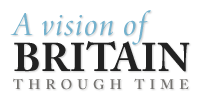In 1887, John Bartholomew's Gazetteer of the British Isles described Holyrood like this:
Holyrood, royal palace, and remains of abbey, in E. of Edinburgh. The abbey (1128), now represented chiefly by the nave of the church, contains the buryingvault of the Scottish kings. The palace was founded 1501, and enlarged 1528, but the present edifice is mainly of date 1671-1679; it contains Queen Mary's apartments, the Picture Gallery, and the Royal private apartments. ...
Queen Mary's apartments are in the older portion of the building. In the Picture Gallery the Scottish peers elect their Parliamentary representatives, and the Lord High Commissioner to the General Assembly of the Church of Scotland holds his levees. Adjoining Holyrood is the Royal Park (King's or Queen's), first enclosed by James V.; it is practically a recreation-ground for the citizens of Edinburgh, has a carriage-drive round it, is nearly 5.miles in circuit, and includes Arthur's Seat and Salisbury-Crags.
Additional information about this locality is available for Edinburgh
Holyrood through time
Holyrood is now part of Edinburgh district. Click here for graphs and data of how Edinburgh has changed over two centuries. For statistics about Holyrood itself, go to Units and Statistics.
GB Historical GIS / University of Portsmouth, History of Holyrood, in Edinburgh and Midlothian | Map and description, A Vision of Britain through Time.
URL: https://www.visionofbritain.org.uk/place/26966
Date accessed: 26th April 2024
Not where you were looking for?
Click here for more detailed advice on finding places within A Vision of Britain through Time, and maybe some references to other places called "Holyrood".
